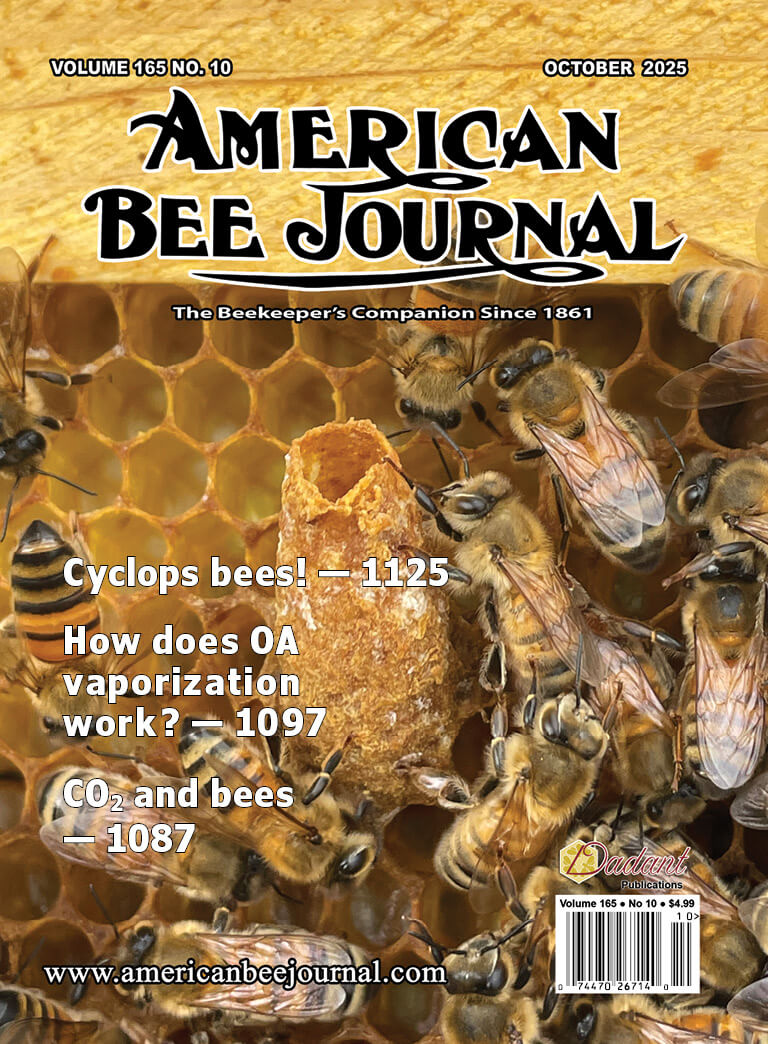Bees on public lands, from a forester’s perspective
Colonizing the Forest
It sure felt good diving into my October issue of American Bee Journal after being gone for nearly 3 months on forest fire assignments across the west. As I relaxed into bee-nerdom, I was captured by Randy Oliver’s letter to the editor disagreeing with the Xerces Society’s petition to prohibit beehives on national forest lands. Within a month, I came upon other views about competition between the western honey bee and native bees, and access to public forest lands. All were good discussions that may fuel interest in collecting better data. Until then, the jury is mixed on the issue of the ecological effects of honey bees and their influence on hive placement.
I would like to approach the placement of bee yards on public land from a land management angle. My question is whether private bee yards are an appropriate use of federal lands? To find an answer to this question, I simply suggest looking at the federal permitting process. As a Forest Service employee (retired after 30 years), I spent many years managing permitted uses on federal lands and wish to share my perspective. The following views on permitting bee yards on federal lands reflect only my biases and experiences, and are not meant to represent the USDA Forest Service.
Federal land management agencies annually get bombarded with proposals to use public lands for many purposes. Due to this demand, agencies have a systematic set of screening criteria (36 CFR 251.54, FSH 2709.11, Chapter 10) to help review and respond to permit requests. These criteria exist to make objective and consistent judgements on permit applications easier. Because humans run the process, I have little doubt that a district manager somewhere has approved a certain use (e.g., apiaries) that has previously been denied on other forests. Regardless of past inconsistencies, I suggest we simply apply the criteria to the specific question of placing beehives on National Forest lands, and see how it shakes out.
For any uncommon proposal (e.g., bee yards), permit managers first check for existing national or regional prohibitions to the proposed use. Having found none, managers move onto the “initial screening criteria.” These criteria focus on consistencies with forest management direction and policy, public health concerns, conflicts with existing uses, past partnerships with the proponent, creating an exclusive or perpetual use, and a few standard prohibited uses (gambling, sexual services, toxic waste, military activities). These are all pretty straightforward evaluations.
If the applicant or proposed use clears these hurdles, the permit manager turns to a second level of screening criteria, which requires more thoughtfulness. These examine local management objectives, qualifications and financial capacity of the applicant to meet permit terms and conditions, and whether the proposed use serves the public interest.
This last criterion (… serves the public interest) is where permit managers spend a lot of time when an uncommon request hits their desk. Stated simply, would the proposed use enhance the public’s enjoyment of or connection to the public lands involved? For example, outfitters and guides tend to expand access to public lands for many citizens. A key concept is establishing how connected or obligated the proposed activity is to the public land involved. Asked in opposite form, “Can the proposed use reasonably occur elsewhere (i.e., private lands)?” Downhill ski areas are a good example of connection to public land. A sideboard when considering this criterion is that economics or profitability cannot be used to define a public interest for any proposed use.
When I applied these criteria to the question of permitting bee yards on National Forest lands, I drew the following conclusions: Bee yards have no substantial connection to the National Forests and do not enhance the public’s access to or enjoyment of those lands. In short, bee yards on these lands would not serve the public’s interests. I am also concerned that bee yards would create an exclusive use or occupancy of public lands that involves more than simply placing hives in the forest. Given the abundance of private or state lands to support beekeeping operations, I see no Forest Service motivation for approving bee yards on National Forest lands.
Brian McGinley
Eugene, Oregon
Error in RNAi Article
Dear Editor,
There may be a mistake (misspelling) in the article “Running Interference: RNAi and the Promise of Healthy Bees” [December], where the author talked about structure of virus. An entire viral particle consists of an outer protein shell called a capsid and an inner core of nucleic acid instead of amino acid as written in the article. Some viruses have an extra layer or an outer envelope. Thank you.
Ron Yu
Alberta, Canada
Bill responds:
He’s correct, in that description I mistakenly wrote amino acid when I meant to say nucleic. Down the line, amino acids are formed after the cellular machinery translates the nucleic acid segments into mRNA. Speaking of mRNA, I wish I could get a little of that spike-producing mRNA for SARS-CoV-2 in my arm. Many thanks to Ron for the feedback.
Bill
The Grinch and Bee Trees
Hi Eugene,
I read your article “The Grinchy Beekeeper.” You were apparently talking about a typical man-made hive. You forgot to mention that tree nests are off the ground at least six feet (beekeepers not messing with them), they have wood around the whole hive (insulating value of R5 or more), and they have tree above and below the nest adding insulating value.
Aldon Maleckas
Custer, Michigan
Aldon, you are correct. I was writing about the typical Langstroth hives that most of us use. Those rare beekeepers who keep their colonies in tree cavities tend to “mess with them” much less, winter or summer.
Eugene
More on Russian Bees
Gordon Goeking asked for more information on my Russian bees [January Letters]. They go into winter like the …


